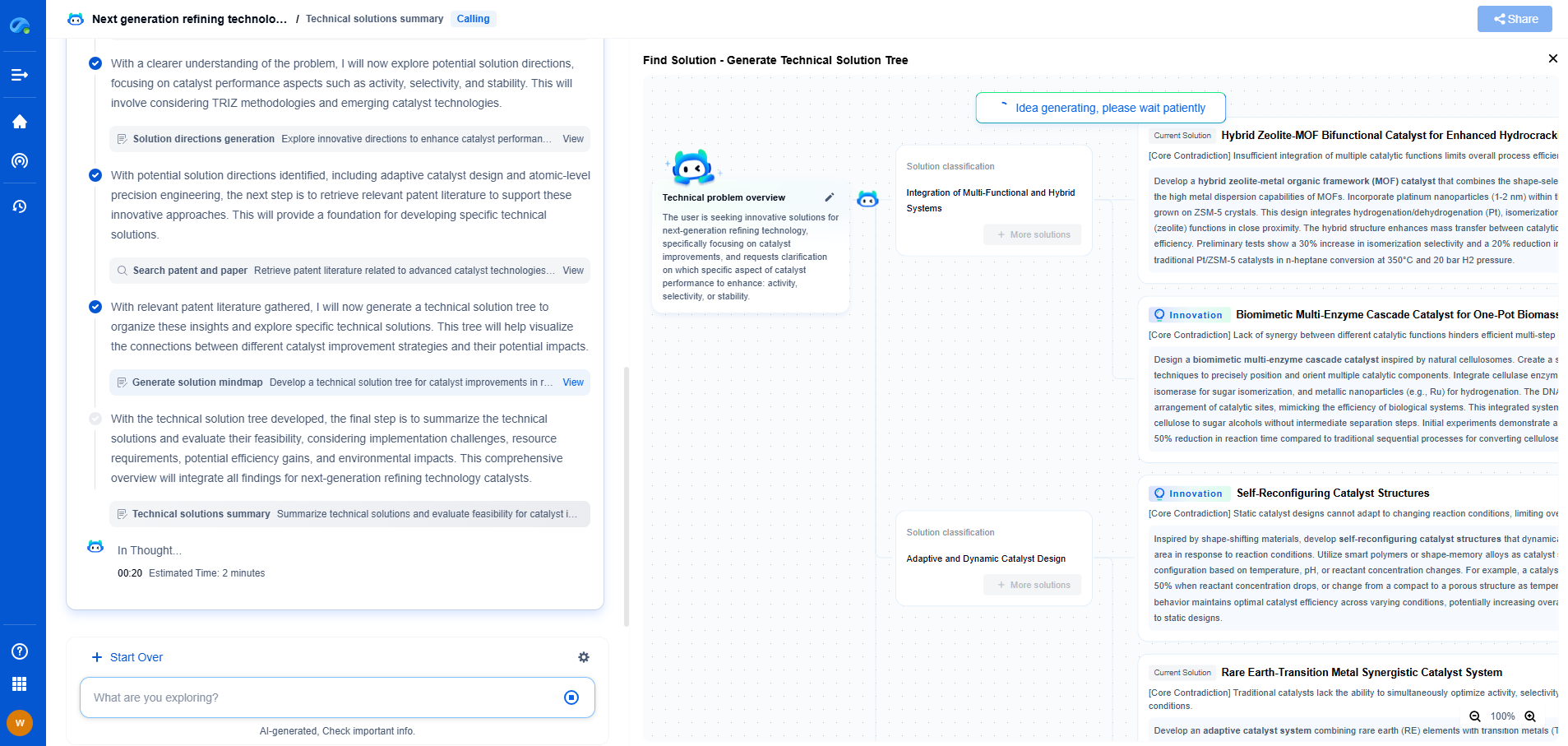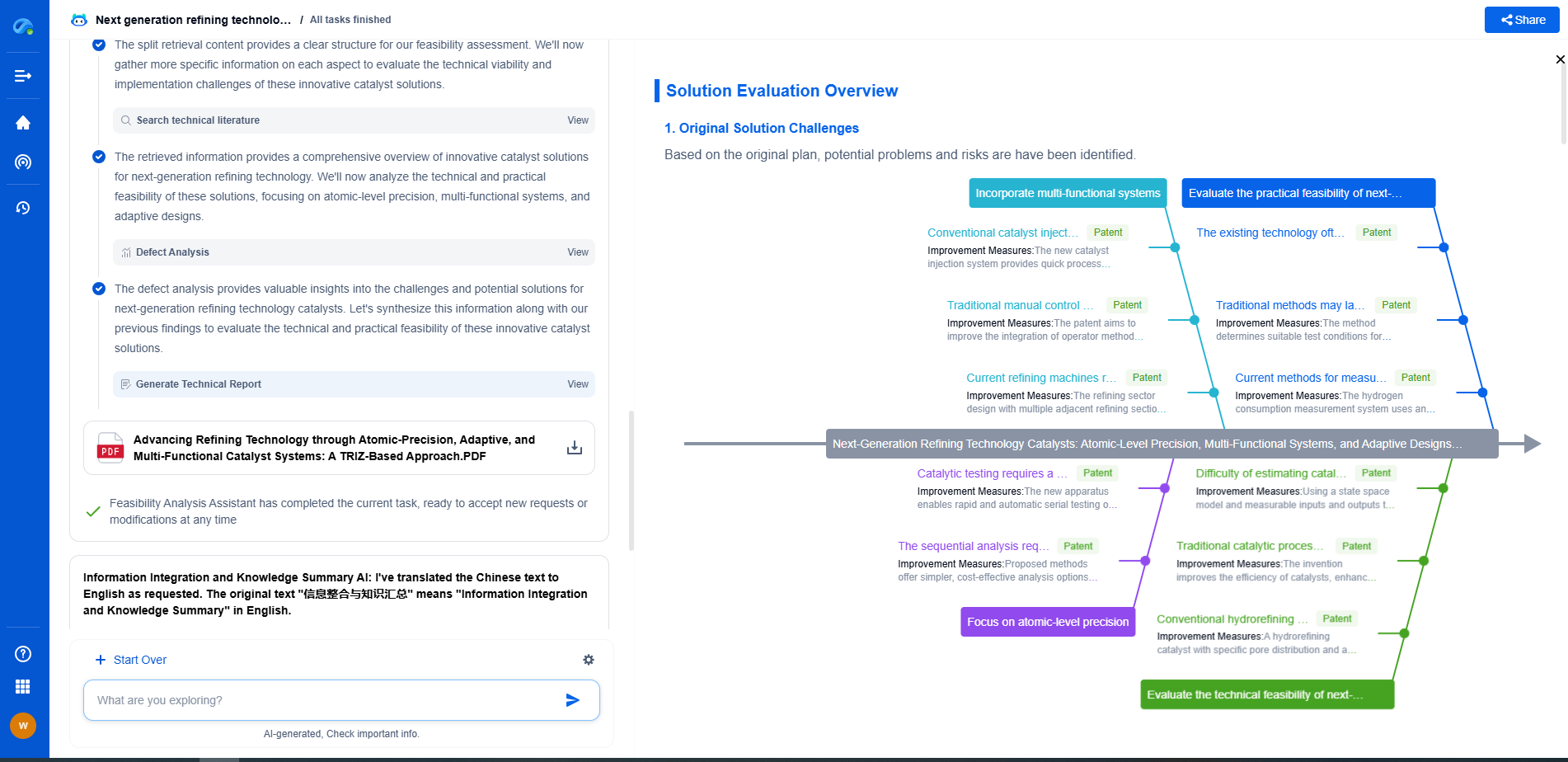Solving Floor-Borne Vibration in HVAC Installations Using Vibration Isolators
JUL 16, 2025 |
In modern buildings, Heating, Ventilation, and Air Conditioning (HVAC) systems are indispensable for maintaining a comfortable and healthy indoor environment. However, a common issue associated with these systems is floor-borne vibration, which can lead to noise disturbances and potential structural damage. This article explores how vibration isolators can effectively mitigate these problems, ensuring a more stable and quieter building environment.
Understanding Floor-Borne Vibration
Floor-borne vibrations are oscillations that travel through a building’s structure, typically originating from mechanical equipment like HVAC systems. These vibrations can cause discomfort for occupants, disturb sensitive equipment, and reduce the overall lifespan of the building by inducing stress in structural components. It is crucial to address these issues to maintain the integrity and comfort of any facility.
Causes of Vibration in HVAC Systems
Several factors can lead to vibrations in HVAC systems. Imbalances in rotating components, such as fans or compressors, are common culprits. Inadequate installation and maintenance practices can exacerbate these imbalances. Additionally, the rigid connection of HVAC equipment to building structures can transmit vibrations directly, amplifying their effects.
The Role of Vibration Isolators
Vibration isolators are devices designed to reduce the transmission of mechanical vibrations from one area to another. They work by creating a flexible barrier that absorbs and dissipates energy, preventing vibrations from traveling through floors and walls. These isolators can be made from a variety of materials, including rubber, cork, and spring elements, each offering different levels of effectiveness based on specific conditions and requirements.
Types of Vibration Isolators
There are several types of vibration isolators commonly used in HVAC installations:
1. **Rubber Mounts**: These are ideal for lower frequency vibrations and are often used where horizontal stability is crucial. They are cost-effective and easy to install.
2. **Spring Isolators**: Suitable for higher frequency vibrations, spring isolators offer excellent load support and flexibility. They can absorb more significant energy inputs, making them ideal for larger HVAC units.
3. **Cork and Neoprene Pads**: These are used primarily for lightweight units and offer moderate damping characteristics. Their simplicity makes them a popular choice for small-scale applications.
Selecting the Right Vibration Isolator
Choosing the appropriate vibration isolator involves understanding the specific characteristics of the vibration problem. Considerations include the frequency and amplitude of the vibrations, the weight of the HVAC equipment, and the structural dynamics of the building. Consulting with a vibration control specialist can help ensure the selection of the most effective isolators for your situation.
Installation and Maintenance
Proper installation is critical to the effectiveness of vibration isolators. They should be correctly aligned and securely attached to both the HVAC equipment and the building structure. Regular maintenance and inspection are essential to ensure that the isolators continue to function optimally over time. This includes checking for wear and tear, alignment issues, and any signs of fatigue in the isolator materials.
Benefits of Using Vibration Isolators
Implementing vibration isolators in HVAC installations brings several benefits. They significantly reduce noise levels, enhancing the comfort of building occupants. By minimizing structural stress, they also extend the longevity of both the HVAC systems and the building structure. Furthermore, isolators can improve the efficiency and reliability of HVAC equipment by reducing wear-related failures.
Conclusion
Floor-borne vibrations from HVAC systems can present considerable challenges in maintaining a comfortable and structurally sound building environment. By utilizing vibration isolators, these issues can be effectively addressed, ensuring quieter, more resilient buildings. Careful selection, installation, and maintenance of these isolators are key to maximizing their benefits and achieving optimal performance in any HVAC setup.
In the world of vibration damping, structural health monitoring, and acoustic noise suppression, staying ahead requires more than intuition—it demands constant awareness of material innovations, sensor architectures, and IP trends across mechanical, automotive, aerospace, and building acoustics.
Patsnap Eureka, our intelligent AI assistant built for R&D professionals in high-tech sectors, empowers you with real-time expert-level analysis, technology roadmap exploration, and strategic mapping of core patents—all within a seamless, user-friendly interface.
⚙️ Bring Eureka into your vibration intelligence workflow—and reduce guesswork in your R&D pipeline. Start your free experience today.
- R&D
- Intellectual Property
- Life Sciences
- Materials
- Tech Scout
- Unparalleled Data Quality
- Higher Quality Content
- 60% Fewer Hallucinations
Browse by: Latest US Patents, China's latest patents, Technical Efficacy Thesaurus, Application Domain, Technology Topic, Popular Technical Reports.
© 2025 PatSnap. All rights reserved.Legal|Privacy policy|Modern Slavery Act Transparency Statement|Sitemap|About US| Contact US: help@patsnap.com

